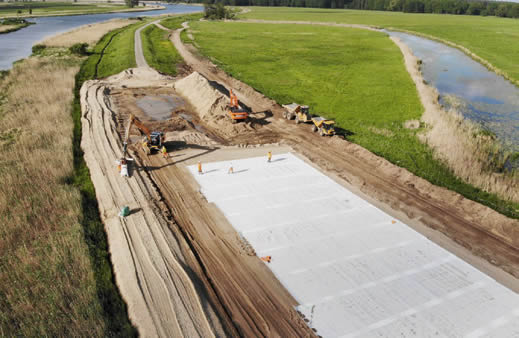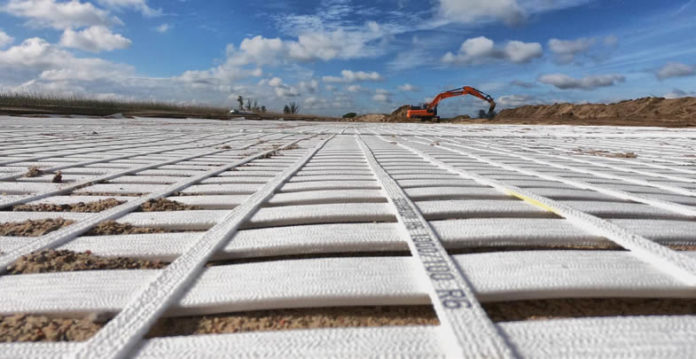The flood disaster of 1997 made a deep impression on many Germans. The Oder and Morava river basins flooded, and the waters spread through regions of the Czech Republic, Poland, and Germany. More than 100 people were killed. Following it, flood protection engineering became one of the most significant topics for communities along the Oder River. In Germany, the legacy of rehabilitation works continues today.
Dikes in Germany have gradually been upgraded for the past 20 years. The new designs minimize the consequences of flooding.
One of the big questions in these upgrades is: What if the subsoil is not conducive to stability?
High-strength geogrids are increasingly the answer. These materials can offer high robustness and long-term tensile strength. Along the German-Polish border, NAUE Secugrid® HS reinforcement material is being utilized.
NOTE: This story comes from NAUE News December 2019, which includes case studies, innovation notes, and commentary on the global market. Download a copy (PDF).
FLOOD PROTECTION WITH HIGH-STRENGTH REINFORCEMENT
The summer 1997 flooding along the Oder River was part of what was called the Millennium Flood. It was the largest known flood along this major waterway border between Germany and Poland. The event lasted several weeks. On the German side, numerous dikes broke and around 5,500ha of agricultural land and settlements with around 400 residential buildings were flooded. Several thousand people were evacuated.
MORE NAUE: The Greening of Bali’s Largest Landfill
This disaster and subsequent weaker floods damaged the dike system in many places. Weak points in the dike geometry and subsoil problems were identified as causes of many of the breaks.

In order to eliminate these potential danger points and withstand future flood events, the dike between the municipality of Friedrichsthal and the town of Gartz was reinforced over a length of 3km. However, investigations of the subsoil below the old dike had revealed relatively thick, soft layers of peat, mud, and clay – not good conditions for the stability of a dike.
For the new flood protection dike, NAUE Secugrid® HS 1000/100 R6 geogrid was installed in the contact area.
Secugrid® HS is a laid geogrid made of high-tensile polyester filaments with an extruded polyethylene protective coating and welded knots for soil reinforcement.
The individual panels of the reinforcement element were installed across a traverse with the main tensile direction transverse to the dike axis. The next panel was overlapped by 50cm at right angles to the laying direction. In the entire dike section between Friedrichsthal and Gartz, approximately 63,000m² of NAUE Secugrid® geogrids were installed in 2018 and 2019.
The reconstruction of the dike was carried out by partial removal of the damaged section and reconstruction as a 3-zone dike. A geosynthetic clay liner (GCL) was installed as a water-side sealing element.
The Brandenburg State Office for Environment (LfU Brandenburg) was responsible for the redevelopment of the Oder dike. The engineering consortium WTU GmbH (Bad Liebenwerda) served as planners and Streicher Tief- und Ingenieurbau Jena GmbH & Co. KG was the construction company.
Learn more about NAUE’s geosynthetics and engineering services, global operations, and more at www.naue.com.
[adsanity id=”96962″ align=”aligncenter”/]












